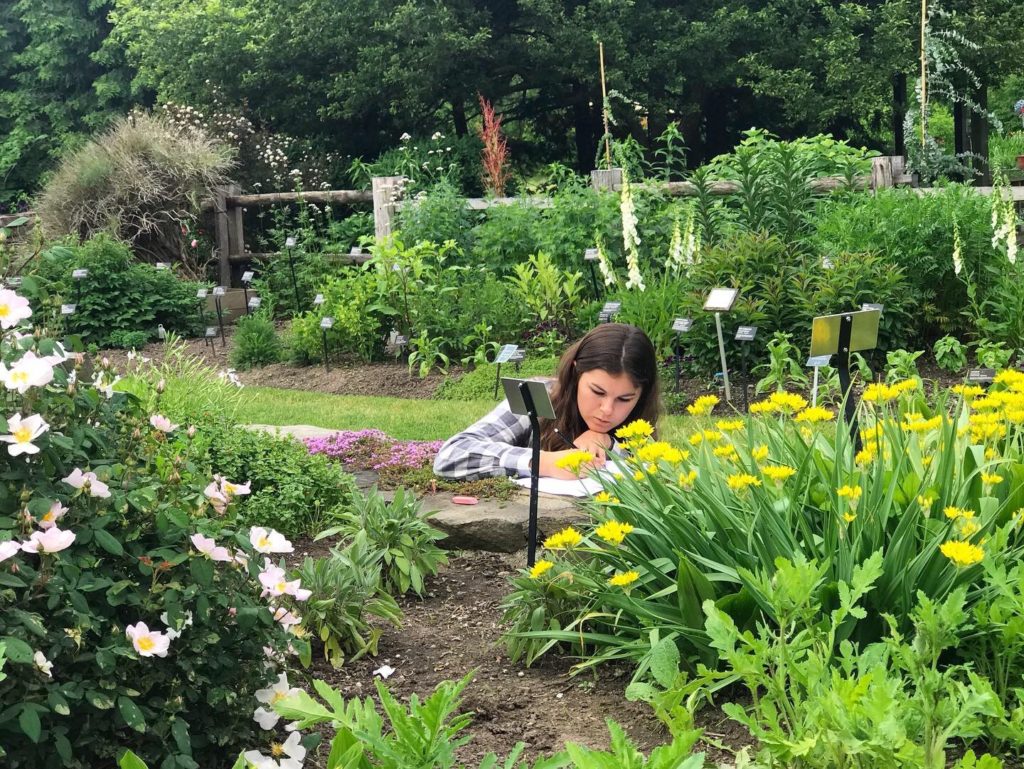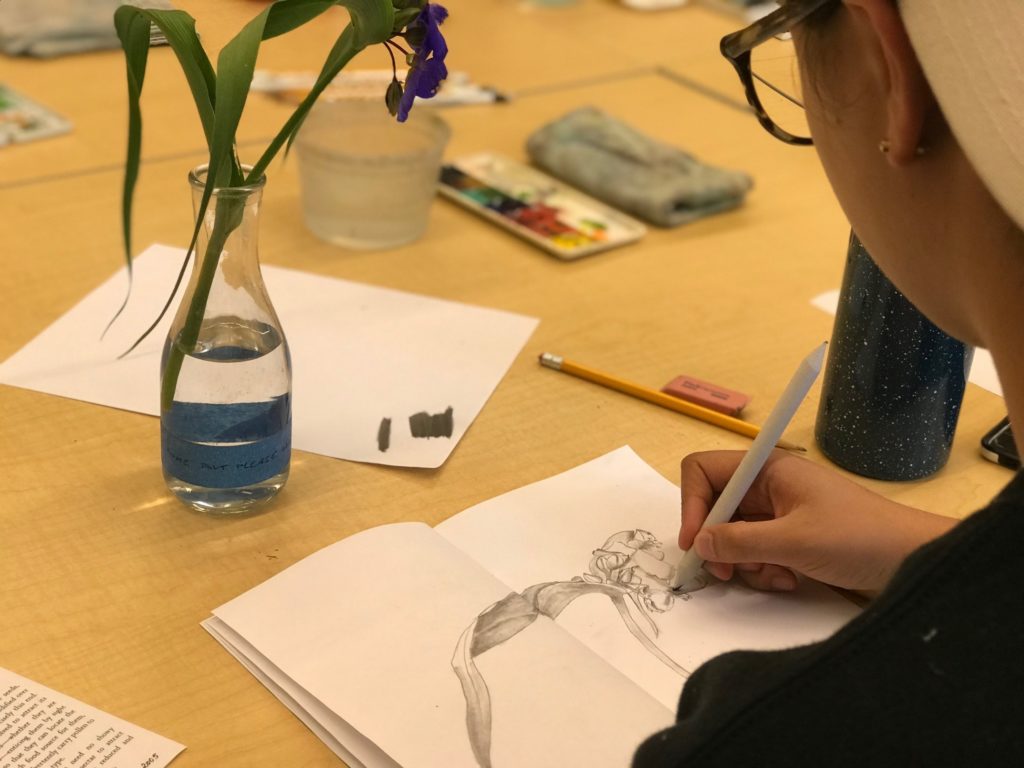
This week’s Learning Monday for Cornell Botanic Gardens’ interns featured botanic watercolor session with Camille Doucet, an experienced artist who loves painting the natural world. We were extremely lucky to have her, as she immediately brought out the artist within all of us.
At the beginning of the session, we were asked to draw a maple or oak leaf from memory, and to using our past memories of these trees. . Needless to say, mine wasn’t too great. It seemed like a maple-oak leaf hybrid. Camille then gave each of us an oak tree leaf to stare at for a few minutes, and then took it away and asked us to draw it based on our short-term memory. These two exercises showed us that relying on our memory to draw is often unreliable and produces less meaningful art.
This was reinforced in the final part of this exercise: blind drawing. Camille gave back the leaves and asked us to draw the leaves, but only by looking at the object. This is accomplished by drawing while never looking at the paper you are drawing on, forcing you to rely on observing the object and trusting the movements of your hands. Unlike our previous drawings, the lines of our blind-drawings were smoother, and the shapes were more accurate. This was a pivotal exercise, revealing to us that all of us can draw.
We then worked on blind-drawing outside in the gardens. With each passing drawing, I could see my strokes getting better, and it surprised me how much my hands knew what to do when I was not constantly scrutinizing, editing, and critiquing my own work, and instead, focusing on the plant in front of me. Camille remarked, “If you look at the flower, all the information is there,” marveling at the beauty of nature and its intricacies.

When we re-entered the Lewis Building from the gardens, we used what we learned from blind drawing to draw different flowers, now looking at both the plant and our drawing. We learned techniques used for shading and watercolor painting, such as wet-on-wet, soft edge, and more. These techniques helped us give dimension and character to our drawings. We drew flowers and leaves, trying our hand at different shapes and angles. Camille remarked that all the interns had “a good eye for color, “as we meticulously mixed different colors to get the perfect hue of pink, yellow, or red.

More than just a fun exercise, today’s studio experience with Camille taught us the importance of botanic art. Phil Syphrit, intern coordinator at Cornell Botanic Gardens, also hoped this activity would help us “explore different career paths and other ways to interact with nature,” encouraging us to discover our own biocultural values.
For me, this art experience helped me appreciate the small details of plants and the magnificence of a single flower. Botanic art asks us to reflect and ponder upon our own relationships with nature. At the same time, it asks us to extend this same relationship with nature through the process of art creation. In the natural sciences, this kind of botanic art is also used for historical documentation of plants, expressing the intersection of the arts and sciences in nature.
Botanic art is a broad genre of art and manifests itself in many ways throughout Cornell Botanic Gardens. Art pieces range from sculptures, to memorials, to hanging wall pieces, and all hope to convey different aspects of Cornell Botanic Gardens mission, and to connect people with plants and nature. In some sense, the act of curating the garden itself is an art meant to inspire all those who visit.
Read more about the internship program at Cornell Botanic Gardens. .